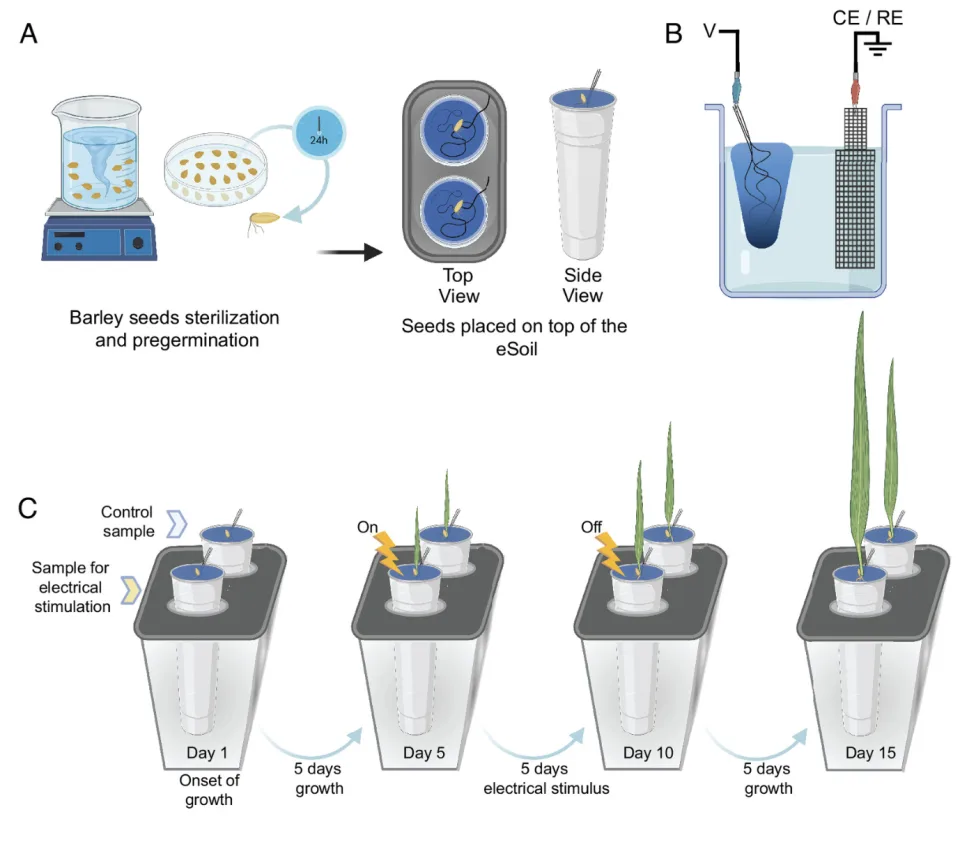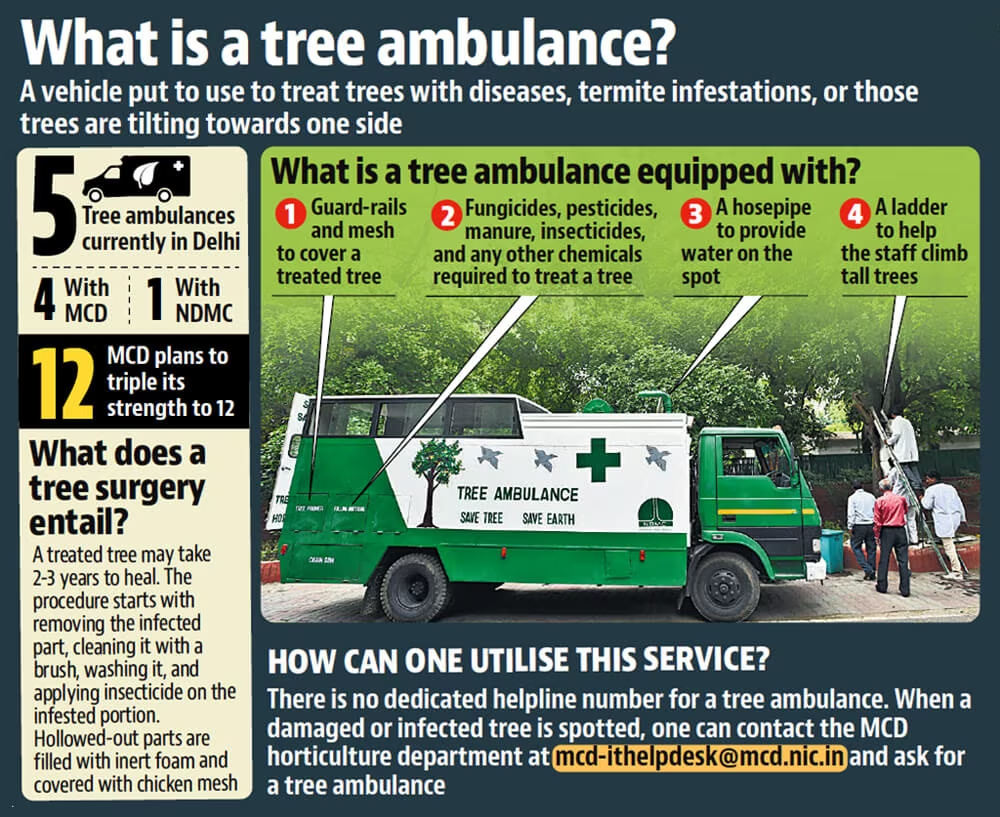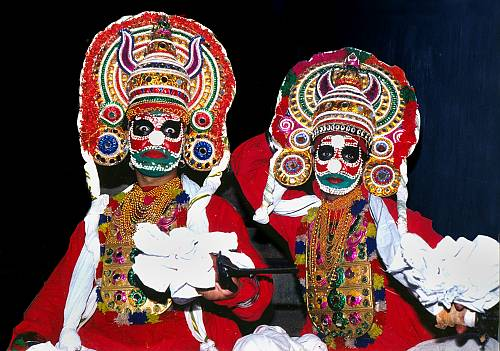Social Justice
ECI Promotes Respectful Dialogue on Disabilities in Politics
For Prelims: Election Commission, Persons with Disabilities, Rights of Persons with Disabilities Act 2016, Directive Principles of State Policy, Accessible India Campaign, DeenDayal Disabled Rehabilitation Scheme, National Fellowship for Students with Disabilities
For Mains: Constitutional and Legislative Framework for PwD in India, Major Challenges Related to PwD in India.
Why in News?
The Election Commission (EC) has issued guidelines to political parties to use disability and gender sensitive language, and refrain from using derogatory references to persons with disabilities (PwD) in public speeches, campaigns and writings.
What are the Key Guidelines of the EC?
- Prohibition of Derogatory Language: Political parties and their representatives are urged to refrain from using derogatory, insulting, or offensive references related to disability or PwDs in any public statements, speeches, writings, articles, or campaigns. And make sure that all campaigns remain accessible to all citizens.
- Avoidance of Ableist Language: Specific terms considered ableist or offensive towards PwDs such as "dumb," "retarded," "blind," "deaf," "lame," etc., are highlighted as language to be avoided.
- Internal Review and Rectification: All campaign materials, including speeches, social media posts, advertisements, and press releases, should undergo internal review within the political party to identify and rectify instances of offensive language.
- Declaration of Use of Sensitive Language: Political parties should declare on their websites their commitment to using disability and gender-sensitive language, respecting human equality, equity, dignity, and autonomy.
- Adoption of Rights-Based Terminology: Parties are encouraged to use rights-based terminologies as outlined in the Convention on Rights of Persons with Disabilities (CRPD).
- Legal Consequences: Any violation of the guidelines may fall under the provisions of Section 92 of the Rights of Persons with Disabilities Act 2016.
What is the Status of Persons with Disabilities in India?
- Status: As per the 76th round of National Sample Survey (NSS), 2.21% of the Indian population identifies as having a disability.
- The incidence of disability is highest in the age group 10-19 years, highlighting the need for early intervention and support.
- Constitutional and Legislative Framework for PwD in India:
- Constitution:
- The Constitution of India ensures equality, freedom, justice and dignity of all individuals through Fundamental Rights and implicitly mandates an inclusive society for all including the persons with disabilities.
- Article 41 of the Constitution (Directive Principles of State Policy) states that the State shall make effective provision for securing the right to work, to education and to public assistance in cases of unemployment, old age, sickness and disablement, within the limits of its economic capacity and development.
- Legislation:
- The Rights of Persons with Disabilities Act, 2016 (RPwD Act) which replaced the Persons with Disabilities (Equal Opportunities, Protection of Rights and Full Participation) Act, 1995, is the most comprehensive legislation for PwDs in India.
- Government job reservation for PwD is 4%, while in government or aided higher educational institutions, seats reserved for students with disabilities is 5%.
- The Rights of Persons with Disabilities Act, 2016 (RPwD Act) which replaced the Persons with Disabilities (Equal Opportunities, Protection of Rights and Full Participation) Act, 1995, is the most comprehensive legislation for PwDs in India.
- Other Related Initiatives:
- Constitution:
- Major Challenges:
- Accessibility: Many public spaces, transportation systems, and buildings lack proper accessibility features like ramps, elevators, and designated spaces for PWDs, making it challenging for them to move around independently.
- Only around 3% of public buildings in India are accessible to PWDs (Census of India, 2011).
- Inadequate Healthcare: Only 37% of PWDs in rural India have access to healthcare facilities, according to the Census of India, 2011.
- A recent report by the World Health Organization identified a shortage of healthcare professionals trained in disability management across India, limiting access to specialised care.
- Limited Educational Opportunities: Access to quality education for PWDs remains a challenge. Schools often lack adequate facilities and trained teachers to cater to diverse learning needs, resulting in exclusion from mainstream education.
- Employment Barriers: PWDs encounter significant hurdles in finding suitable employment. Discrimination, lack of accessible workplaces, and a dearth of accommodations to meet their needs often lead to high unemployment rates among PWDs.
- Stigma and Discrimination: There is still a prevailing stigma surrounding disabilities in India, and PWDs often face prejudices that limit their opportunities and acceptance in society.
- Legal and Policy Gaps: While there are laws and policies in place to protect the rights of PWDs in India, implementation and enforcement remain inconsistent. This gap affects the actual realization of their rights and access to resources.
- Accessibility: Many public spaces, transportation systems, and buildings lack proper accessibility features like ramps, elevators, and designated spaces for PWDs, making it challenging for them to move around independently.
Way Forward
- Reimagining Assistive Technology: Government can partner with tech giants and design institutes to create a robust ecosystem of accessible and affordable assistive technology using Artificial Intelligence and the Internet of Things, catering to diverse disabilities.
- It can include self-navigating public spaces, adaptive traffic signals, and voice-controlled interfaces for effortless access.
- Also, promote open-source hardware and software development for PwDs to customize and repair devices.
- Revolutionising Education and Skill Development: Implement mandatory disability sensitivity training for educators and integrate it into teacher training programs.
- Deploy AI-powered learning assistants, interactive tools, and accessible e-learning platforms to cater to diverse learning needs.
- Employment Landscape Shift: Mandatory PwD friendly infrastructure in corporations and facilitate PWDs' participation in flexible online gig work suited to their skills and abilities, empowering them with remote work options.
- Incubating PWD-led startups offering accessible products and services, fostering self-reliance and creating employment opportunities.
- Towards Inclusive India: Organizing community-based workshops and sensitization programs to promote understanding and inclusivity of PWDs.
UPSC Civil Services Examination, Previous Year Question (PYQ)
Q. India is home to lakhs of persons with disabilities. What are the benefits available to them under the law? (2011)
- Free schooling till the age of 18 years in government run schools.
- Preferential allotment of land for setting up business.
- Ramps in public buildings.
Which of the statements given above is/are correct?
(a) 1 only
(b) 2 and 3 only
(c) 1 and 3 only
(d) 1, 2 and 3
Ans: (d)

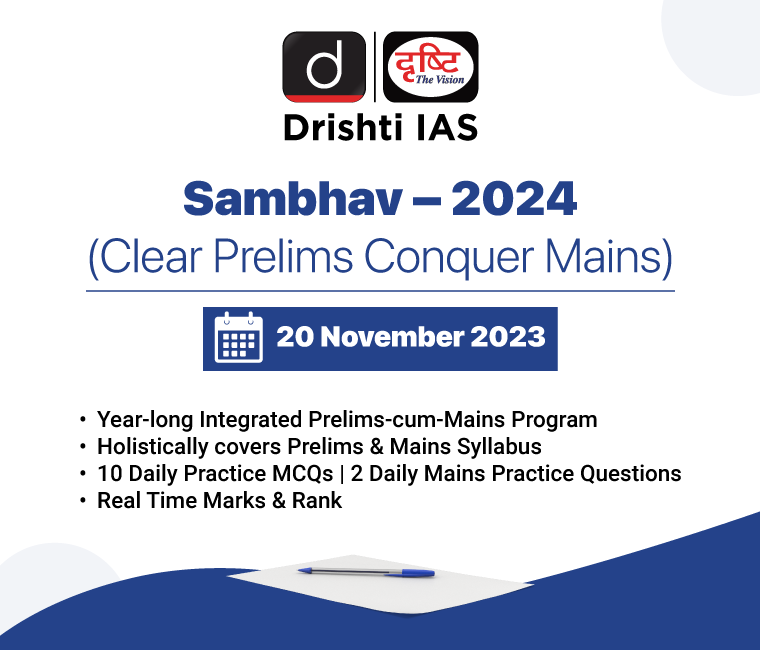
Governance
Shahi Idgah and Krishna Janmabhoomi Temple Dispute
For Prelims: Shahi Idgah, Krishna Janmabhoomi temple, Keshava Deva temple, Aurangzeb, Dara Shukoh, Raja of Benaras, Babri Masjid judgment
For Mains: Significance of judiciary in redressal of disputes related to places of worship.
Why in News?
The Allahabad High Court recently ruled that a survey will be conducted for the Shahi Idgah, a three-domed mosque in Mathura.
- It is seeking appointment of a court commission to inspect the Shahi Idgah mosque that stands adjacent to the Krishna Janmabhoomi temple in Mathura.
What is the History of the Disputed Land?
- Raja Veer Singh Bundela of Orchha had also built a temple on the same premises in 1618 and the mosque was built by Aurangzeb in 1670 on the site of an earlier temple.
- The Krishna Janmasthan temple in Mathura is believed to have been built around 2,000 years ago, in the 1st century CE.
- A survey has been ordered due to demands by Hindu representatives for complete ownership of the premises where the Keshava Deva temple was destroyed on the orders of Mughal emperor Aurangzeb in 1670.
- The area was regarded as nazul land — non-agricultural state land owned by the Marathas, and then the British.
- The temple was originally built in 1618 during the reign of Jahangir and was patronized by Aurangzeb’s brother and rival, Dara Shukoh.
- In 1815, the Raja of Benaras purchased the 13.77-acre land from the East India Company.
- Later, the Shri Krishna Janmabhoomi Trust was established.
- The trust acquired ownership rights over the temple, and in 1951.
- The 13.77-acre land was placed under the trust with the condition that it would never be sold or pledged.
- In 1956, the Shri Krishna Janmasthan Sewa Sangh was set up to manage the affairs of the temple.
- In 1968, an agreement was signed between the Sri Krishna Janmasthan Seva Sangh and the Shahi Idgah Masjid Trust, where the temple authority conceded a portion of the land to the Idgah as part of the settlement.
- The current dispute involves temple petitioners seeking possession of the entire parcel of land.
What is the Present Status of the Issue?
- The plea for a survey was filed on behalf of the Hindu deity, Shri Krishna and seven others, who in their original suit pending before court claimed that the mosque was built over the birthplace of Shri Krishna on the orders of Mughal emperor Aurangzeb in 1670.
- Since the Babri Masjid judgment in 2019, nine cases related to the Shri Krishna Janmabhoomi and Shahi Idgah Masjid, have been filed in the Mathura court.
- The Allahabad High Court transferred to itself all the suits pending before the Mathura Court on various reliefs pertaining to the Sri Krishna Janmabhoomi-Shahi Idgah Mosque dispute.
- In the High Court, the U.P. Sunni Central Waqf Board and the Shahi Idgah Masjid Committee argued that the birthplace of Lord Krishna is not under the Mosque.
- They stated that the plaintiffs' claim lacks evidence and is based on speculation.
- When the Committee of Management Trust of the Shahi Idgah Masjid sought a stay on the survey from the Supreme Court, the court did not grant any relief.
What is the Places of Worship Act,1991?
- About:
- It was enacted to freeze the status of religious places of worship as they existed on August 15, 1947, and prohibits the conversion of any place of worship and ensures the maintenance of their religious character.
- Major Provisions of the Act:
- Prohibition of Conversion (Section 3):
- Prevents the conversion of a place of worship, whether in full or part, from one religious denomination to another or within the same denomination.
- Maintenance of Religious Character (Section 4(1)):
- Ensures that the religious identity of a place of worship remains the same as it was on August 15, 1947.
- The Allahabad High Court's recent stance in the Gyanvapi case suggests that the Places of Worship Act, 1991 does not clarify “religious character of any place of worship” and can only be determined in a trial, based on documentary and oral evidence, on a case-to-case basis.
- Abatement of Pending Cases (Section 4(2)):
- Declares that any ongoing legal proceedings concerning the conversion of a place of worship's religious character before August 15, 1947, will be terminated, and no new cases can be initiated.
- Exceptions to the Act (Section 5):
- The Act does not apply to ancient and historical monuments, archaeological sites, and remains covered by the Ancient Monuments and Archaeological Sites and Remains Act, 1958.
- It also excludes cases that have already been settled or resolved and disputes that have been resolved by mutual agreement or conversions that occurred before the Act came into effect.
- The Act does not extend to the specific place of worship known as Ram Janmabhoomi-Babri Masjid in Ayodhya, including any legal proceedings associated with it.
- Penalties (Section 6):
- Specifies penalties, including a maximum imprisonment term of three years and fines, for violating the Act.
- Prohibition of Conversion (Section 3):


Governance
Kerala Leads Nation in NH Land Acquisition Contributions
For Prelims: Land Acquisition, National Highways Authority of India (NHAI), Bharatmala Pariyojana
For Mains: Role of Bharatmala Pariyojana in Exemption from Sharing the Land Acquisition Cost.
Why in News?
Recently, the Ministry for Road Transport and Highways (MoRT&H) presented a document in Parliament which shows that Kerala has the highest amount of financial Burden followed by Haryana and Uttar Pradesh.
- The reason is being norms like state to bear 25% of the land acquisition cost for national highway development.
What are the Key Highlights of the Document?
- The National Highways Authority of India (NHAI) has spent the highest share on land acquisition and related activities in Maharashtra in the past five years followed by Uttar Pradesh, and Kerala.
- The Kerala has submitted a proposal for waiver of the 25% share for land acquisition for two projects of the NHAI- Ernakulam bypass and Kollam-Shenkottai stretch and exemption from sharing the land acquisition cost of the Outer Ring Road project by listing the project under the Bharatmala Pariyojana.
- According to documents Haryana and Uttar Pradesh have to pay Rs. 3,114 crore and Rs. 2,301 crore respectively.
- Key Facts About Road Network in India
- India's road density at 1,926.02 per 1,000 sq.km of area in 2018-19 was higher than that of many developed countries though surfaced/paved road constituting 64.7 % of the total road length is comparatively lower than that of developed countries.
- National Highways constituted 2.09% of the total road length of the country in 2019.
- The balance road networks comprise of State Highways (2.9%), District Roads (9.6%), Rural Roads (7.1%), Urban Roads (8.5%) and Project Roads (5.4%).
What are the Challenges Related to Land Acquisition in India?
- High Financial Cost: The financial cost of land acquisition in India has increased significantly due to the amended Land Acquisition Act of 2013, which provides higher compensation and consent requirements for land owners.
- Environmental Clearance: Delays and uncertainties in obtaining environmental clearance and land acquisition notifications, which affect the project timelines and costs.
- Conflicts and Protests: Affected communities oppose projects on the grounds of environmental, social, or cultural impacts.
- Lack of Transparency and Accountability in Land Acquisition Process: As many landowners are not aware of their rights and entitlements and coerced to sell their land at low prices.
- Government agencies engaged in land acquisition have been observed to exhibit actions that may seem occasionally deviate from the principles of natural justice and fair compensation.
- Inadequate Legal Framework and Enforcement Mechanism for Land Acquisition: The existing laws governing land acquisition are outdated and complex, creating confusion and uncertainty for both the government and the landowners. The laws also lack clarity on various aspects of land acquisition, such as financial cost , environmental clearance, dispute resolution mechanisms etc.
What are the Initiatives taken by the Government to Reform the Land Acquisition Process?
- The Right to Fair Compensation and Transparency in Land Acquisition, Rehabilitation and Resettlement Act, 2013 (LARR Act of 2013) replaced the Land Acquisition Act of 1894 and introduced new provisions for compensation, consent, social impact assessment, and rehabilitation and resettlement of affected persons.
- The SVAMITVA scheme was launched in 2020 to provide property cards to rural landowners and enable them to use their land as a financial asset.
- The Special Economic Zones (SEZs) Act, 2005 was enacted to facilitate the establishment of SEZs in India and provide incentives and exemptions for the development of export-oriented industries.
- The Bhoomi Rashi Portal is an e-Governance initiative of the Ministry of Road Transport & Highways. The portal intends to expedite the process of land acquisition for National Highways. It has fully digitised and automated the entire process of land acquisition.
- PM Gati Shakti Scheme
- Bharatmala scheme
Way forward
- Improving Transparency and Accountability in the land acquisition process by adopting best practices such as online mapping systems, public hearings, social impact assessments, grievance redressal mechanisms, etc.
- Ensuring fair compensation and rehabilitation for the affected people by adopting criteria such as market value, alternative sites, livelihood support, social security, etc.
- Minimising environmental impacts of land acquisition by adopting measures such as environmental clearance, environmental impact assessment, mitigation measures, monitoring mechanisms, etc.
- Reforming the legal framework for land acquisition by adopting measures such as simplifying laws, updating laws, harmonizing laws, strengthening enforcement mechanisms, etc.
UPSC Civil Services Examination, Previous Year Questions (PYQs)
Prelims
Q1. With reference to ‘National Investment and Infrastructure Fund’, which of the following statements is/are correct? (2017)
- It is an organ of NITI Aayog.
- It has a corpus of `4,00,000 crore at present.
Select the correct answer using the code given below:
(a) 1 only
(b) 2 only
(c) Both 1 and 2
(d) Neither 1 nor 2
Ans: (d)
- The NIIF (National Investment and Infrastructure Fund) is overseen by the Investment Division of the Department of Economic Affairs, Ministry of Finance. Hence, statement 1 is not correct.
- The NIIF is currently managing three funds which are registered as an Alternative Investment Funds (AIFs) under the SEBI Regulations. Those three funds are Master Fund, Strategic Fund and Fund of Funds and the proposed corpus of NIIF is `40,000 crore and not 4,00,000 crore. Hence, statement 2 is not correct. Therefore, option (d) is the correct answer.
Mains
Q. “Investment in infrastructure is essential for more rapid and inclusive economic growth.” Discuss in the light of India’s experience. (2021)

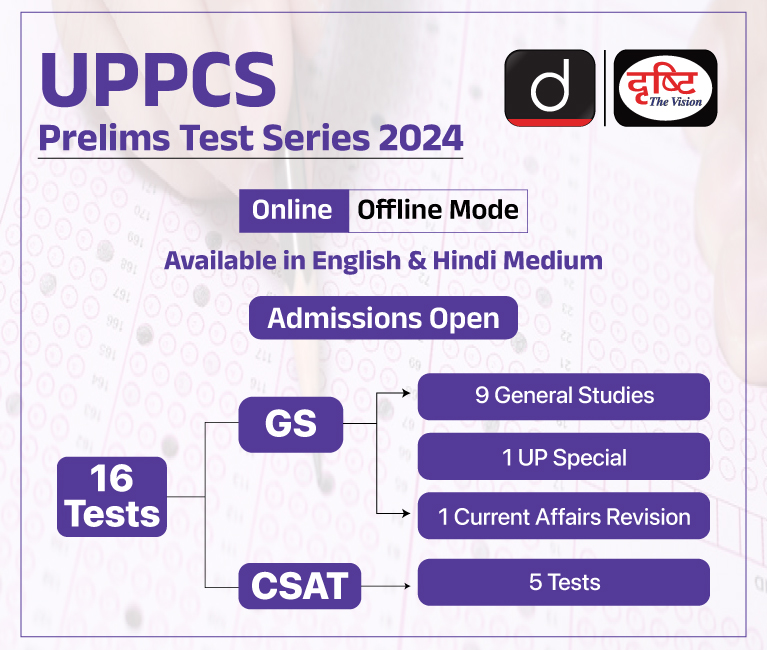
Agriculture
Electronic Soil
For Prelims: Electronic Soil, Hydroponics, Food and Agricultural Organisation (FAO).
For Mains: Electronic Soil, e-technology in the aid of farmers.
Why in News?
Recently, researchers from Linköping University in Sweden have developed ‘Electronic Soil’ that can speed up the growth of plants in Hydroponic spaces.
What is Electronic Soil?
- About:
- The electronic soil (eSoil) developed is a novel conductive cultivation substrate tailored specifically for hydroponic systems.
- Unlike traditional substrates like mineral wool, which are non-biodegradable and manufactured using energy-intensive processes, eSoil is composed of cellulose, a biopolymer, blended with a conductive polymer known as PEDOT (Poly(3,4-ethylenedioxythiophene)).
- This innovative blend of materials allows for the stimulation of root systems in plants through low-power electrical currents.
- Significance:
- eSoil offers the advantage of significantly lower energy consumption and eliminates the risk associated with high-voltage systems.
- The significance of eSoil lies in its ability to enhance the growth of plants, as evidenced by a study showing a 50% increase in the growth rate of barley seedlings cultivated in hydroponic systems using this technology.
- Hydroponics coupled with eSoil can be potentially helpful in addressing global food demands, especially in urban settings where arable land is limited.
What is Hydroponics?
- Hydroponics:
- Hydroponics is a method of growing plants in a water based, nutrient rich solution in a soilless media.
- It does not use soil, instead the root system is supported using an inert medium such as perlite, rockwool, clay pellets, peat moss, or vermiculite.
- The fundamental is to allow the plants roots to come in direct contact with the nutrient solution, while also having access to oxygen, which is essential for proper growth.
- Advantages:
- Land and Water Efficient: The hydroponic farming technology with closed water loop systems is a viable option for farmers with limited access to land and water.
- Suitable for Urban Areas: The significance of soilless systems increases many folds when it comes to urban and peri-urban areas where the arable land is polluted.
- Lower Resource Consumption: Lower and more efficient resource consumption allows this alternative farming technique to be adopted by a variety of stakeholders.
- Higher Yield: According to the Food and Agricultural Organisation (FAO), the vegetable yield of soilless systems is 20-25% higher than in traditional systems as the number of plants per square metre is higher.
- Drawbacks:
- Much Time and Attention Required: The water needs to be replaced at regular intervals as standing or recirculating water makes it easier for plant disease to spread if pathogens enter the water supply.
- Water and Electricity Intensive: Water and electricity are the two major factors in Hydroponic farming, in absence of adequate water supply or stable electricity, the Hydroponic system won’t thrive well.
UPSC Civil Services Examination, Previous Year Question (PYQ)
Q. What is the use of biochar in farming? (2020)
- Biochar can be used as a part of the growing medium in vertical farming.
- When biochar is a part of the growing medium, it promotes the growth of nitrogen-fixing microorganisms.
- When biochar is a part of the growing medium, it enables the growing medium to retain water for longer time.
Which of the statements given above is/are correct?
(a) 1 and 2 only
(b) 2 only
(c) 1 and 3 only
(d) 1, 2 and 3
Ans: (d)
- Biochar is a porous carbonaceous solid produced by heating various biomass feedstocks under high temperatures in an oxygen-limited environment.
- As biochar migrates vertically through the soil profile, therefore can be used as a part of the growing medium in vertical farming. Hence, statement 1 is correct.
- Due to its adsorption ability, some biochars have the potential to immobilise heavy metals, pesticides, herbicides, and hormones; prevent nitrate leaching and faecal bacteria into waterways; and reduce N2O and CH4 emissions from soils. Hence, statement 2 is correct.
- Biochar can help retain water and nutrients in the soil for the plants to take up as they grow. Hence, statement 3 is correct.
- Therefore, option (d) is the correct answer.

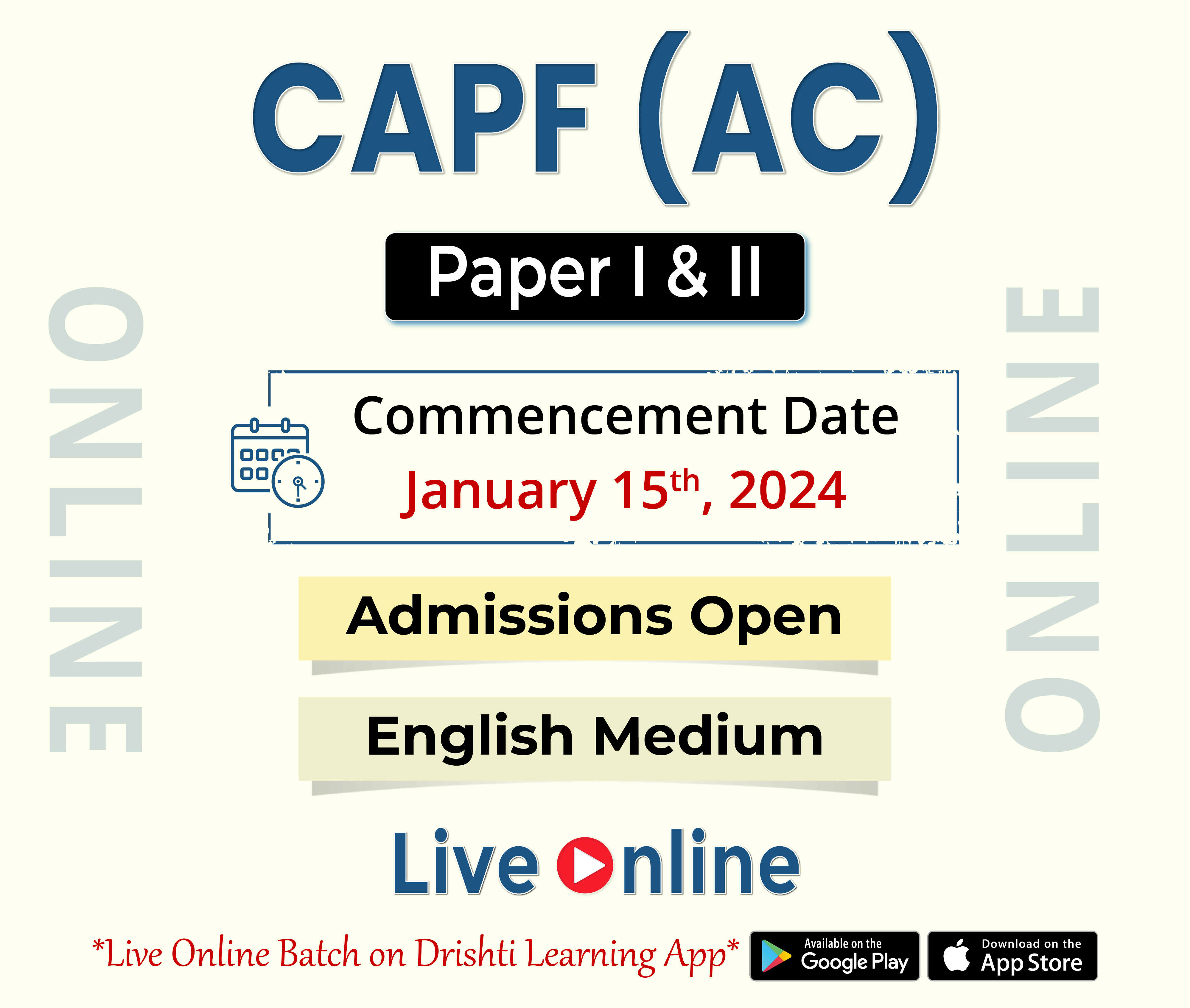
Indian Economy
Internationalisation of Indian Currency
For Prelims: Internationalization of Indian Currency, Capital account transactions, Special Vostro Rupee Accounts (SVRAs), International Trade Settlement in Indian Rupees, External commercial borrowings in Rupees
For Mains: Internationalization of Indian Currency, Bilateral, regional and global groupings and agreements involving India and/or affecting India’s interests.
Why in News?
Recently, India has made first-ever payment in rupees for crude oil purchased from the UAE, paving the way for the Internationalization of Indian Currency.
- In July 2023, an agreement with the UAE facilitated Indian Oil Corporation's (IOC) rupee payment for a million barrels of crude from ADNOC (Abu Dhabi National Oil Company). Similarly, some Russian oil imports were settled in rupees.
- India, heavily reliant on oil imports (over 85%), employs a strategy centered on sourcing the most cost-effective oil while diversifying suppliers without breaching international obligations, notably amidst the Russian oil controversy post-Ukraine conflict.
What is Internationalisation of Rupee?
- About:
- Internationalization of rupees is a process that involves increasing use of the local currency in cross-border transactions.
- It involves promoting the rupee for import and export trade and then other current account transactions followed by its use in capital account transactions.
- Historical Context:
- In the 1950s, the Indian rupee was widely used as legal tender in the United Arab Emirates, Kuwait, Bahrain, Oman, and Qatar.
- However, the devaluation of India’s currency by 1966 led to the introduction of sovereign currencies in these countries to reduce reliance on the Indian rupee.
- Benefits of Internationalisation of Rupee:
- Appreciate Currency Value: It will improve the demand for the rupee in international trade.
- This can lead to increased convenience and reduced transaction costs for businesses and individuals dealing with India.
- Reduced Exchange Rate Volatility: When a currency is internationalized, its exchange rate tends to stabilize.
- The increased demand for the currency in global markets can help reduce volatility, making it more predictable and reliable for international transactions.
- Geopolitical Advantages: Internationalizing the Rupee can enhance India's geopolitical influence.
- It can strengthen economic ties with other countries, facilitate bilateral trade agreements, and promote diplomatic relations.
- Fortify Indian Economy: Diversifying settlement currencies can reduce dollar demand and fortify India's economy against global currency shocks.
- Appreciate Currency Value: It will improve the demand for the rupee in international trade.
- Challenges:
- Triffin Dilemma: The Triffin dilemma could manifest as a conflict between maintaining stability in India's domestic economy and meeting the global demand for the Rupee. Balancing these conflicting demands presents a challenge in the process of making the Rupee an international currency without adversely impacting the country's economic stability.
- It describes the conflict between a country's domestic monetary policy goals and its role as an international reserve currency issuer.
- Exchange Rate Volatility:
- Opening up the currency to international markets can increase volatility in its exchange rate, especially in the initial stages. Fluctuations can impact trade and investments, affecting economic stability.
- Impact on Import Costs: If the Rupee’s internationalisation leads to increased demand for the currency in global markets, it might strengthen the Rupee against other currencies. A stronger Rupee could potentially reduce the cost of imports from countries like China and Russia, potentially impacting trade balances.
- Limited International Demand: The daily average share for the rupee in the global forex market is only around 1.6%, while India’s share of global goods trade is ~2%.
- Convertibility Concern: The INR is not fully convertible, meaning there are restrictions on its convertibility for certain purposes such as capital transactions. This restricts its widespread use in international trade and finance.
- Demonetization Impact: The demonetization exercise in 2016, along with the recent withdrawal of the Rs 2,000 note, has affected confidence in the rupee, particularly in neighboring countries like Bhutan and Nepal.
- Challenges in Trade Settlement: While efforts have been made to trade with around 18 countries in rupees, transactions have remained limited.
- Also, negotiations with Russia to settle trade in rupees have been slow, hampered by currency depreciation concerns and inadequate awareness among traders.
- Triffin Dilemma: The Triffin dilemma could manifest as a conflict between maintaining stability in India's domestic economy and meeting the global demand for the Rupee. Balancing these conflicting demands presents a challenge in the process of making the Rupee an international currency without adversely impacting the country's economic stability.
- Steps Towards Internationalisation:
- Developments in the GIFT City
- Asian Clearing Union (ACU):
- The ACU is a regional payment arrangement. It facilitates the settlement of trade transactions among its member countries on a multilateral basis. It was established in 1974 by ten central banks of Asia. The ACU currently has 13 member countries. India is a member of ACU.
- In March 2023, the RBI put in place the mechanism for rupee trade settlement with as many as 18 countries.
- Banks from these countries have been allowed to open Special Vostro Rupee Accounts (SVRAs) for settling payments in Indian Rupees.
- In July 2022, the RBI issued a circular on “International Trade Settlement in Indian Rupees”.
- RBI enabled external commercial borrowings in Rupees (especially Masala Bonds).
What are the Reforms that India Can Pursue to Internationalise the Rupee?
- Make the Rupee More Freely Convertible:
- With a goal of full convertibility by 2060, letting financial investments move freely between India and abroad.
- This would allow foreign investors to easily buy and sell the rupee, enhancing its liquidity and making it more attractive.
- Reforms Suggested by Tarapore Committee:
- Strong Fiscal Management: Such as reducing fiscal deficits lower than 3.5%, reducing gross Inflation rate to 3%-5%, and reducing gross banking non-performing assets to less than 5%.
- Liberalised Scheme for Personal Remittance: The introduction of a more liberal scheme for personal remittances to facilitate easier transactions for individuals dealing with foreign exchange.
- Removal of Restrictive Clauses for Employee Stock Options: The removal of restrictive clauses related to issuing Employees’ Stock Options at concessional rates, allowing for smoother transactions and operations concerning stock options.
- Name Change and Reorientation of Department: The committee suggested changing the name and reorienting the department responsible for handling the implementation of the Foreign Exchange Management Act, 1999, from the Exchange Control Department to the Foreign Exchange Department, emphasizing a leaner and more strategic task force approach.
- Pursue a Deeper Bond Market:
- Enabling foreign investors and Indian trade partners to have more investment options in rupees, enabling its international use.
- Encourage Exporters/Importers for Transactions in Rupee:
- Optimising the trade settlement formalities for rupee import/export transactions would go a long way.
- Sign Additional Currency Swap Agreements:
- As with Sri Lanka, to allow India to settle trade and investment transactions in rupees, without resorting to a reserve currency such as the dollar.
- India currently has a bilateral swap arrangement (BSA) with Japan for up to USD 75 billion as a backstop line of support in case of any balance-of-payments issues.
- As with Sri Lanka, to allow India to settle trade and investment transactions in rupees, without resorting to a reserve currency such as the dollar.
- Ensure Currency Management Stability and Improve the Exchange Rate Regime:
- Avoid sudden or drastic changes such as devaluation or demonetisation that can impact confidence.
- Ensure consistent and predictable issuance/retrieval of notes and coins.
Conclusion
The Tarapore Committee's recommendations (in 1997 and 2006), including reducing fiscal deficits, inflation rates, and banking non-performing assets, should be pursued as a primary step towards internationalisation of rupee. Also, advocating for the rupee to become an official currency in international organizations would raise its profile and acceptance.
UPSC Civil Services Examination, Previous Year Questions (PYQs)
Prelims:
Q1. Convertibility of rupee implies (2015)
(a) being able to convert rupee notes into gold
(b) allowing the value of rupee to be fixed by market forces
(c) freely permitting the conversion of rupee to other currencies and vice versa
(d) developing an international market for currencies in India
Ans: (c)
Q2. With reference to Balance of Payments, which of the following constitutes/ constitute the Current Account? (2014)
- Balance of trade
- Foreign assets
- Balance of invisibles
- Special Drawing Rights
Select the correct answer using the code given below:
a. 1 only
b. 2 and 3
c. 1 and 3
d. 1, 2 and 4
Ans: (c)


Important Facts For Prelims
Tiger Deaths in India
Why in News?
In 2023, India witnessed a disturbing surge in tiger deaths, reaching a record 204, as reported by the Wildlife Protection Society of India (WPSI), a non-profit organisation prompting concerns about conservation efforts for these majestic creatures.
What is the Status of Tiger Deaths in India?
- Maharashtra has recorded the highest number of tiger fatalities with 52 deaths, prompting apprehensions regarding the adequacy of conservation measures in the state.
- India's top tiger state, Madhya Pradesh, witnessed 45 deaths, emphasizing the need for enhanced protection. Uttarakhand recorded 26 deaths, adding to the grim statistics.
- Tamil Nadu and Kerala recorded 15 tiger deaths each, reflecting a widespread issue across regions. Karnataka, with the second-highest tiger population, reported 13 deaths.
- The tiger population in India reached 3,167 in 2022, up from 2,967 in 2018. This positive trend, however, raises questions about the sustainability of these gains in the face of increasing threats.
- Natural & other causes, led to 79 tiger deaths, urging a focus on understanding and addressing these factors for effective conservation.
- Poaching remains a persistent threat, claiming 55 tigers' lives, necessitating robust anti-poaching measures.
- Infighting among tigers resulted in 46 deaths, underscoring the significance of habitat preservation.
- Human-induced threats, such as road incidents, caused 7 tiger fatalities, demanding urgent attention to mitigate human-wildlife conflicts.
Way Forward
- Collaboration among government agencies, conservationists, and communities is crucial for effective anti-poaching efforts, utilizing technology and intelligence.
- Establishing a robust anti-poaching network with law enforcement is imperative.
- Strategies to mitigate human-wildlife conflict, especially in areas with roadkill, should be developed.
- Allocate resources for research on natural causes of tiger deaths, enhance monitoring, and ensure transparent reporting to adapt conservation strategies to evolving challenges.
UPSC Civil Services Examination Previous Year’s Questions (PYQs)
Prelims
Q. Among the following Tiger Reserves, which one has the largest area under “Critical Tiger Habitat”? (2020)
(a) Corbett
(b) Ranthambore
(c) Nagarjunasagar-Srisailam
(d) Sundarbans
Ans: (c)
Q. Consider the following protected areas: (2012)
- Bandipur
- Bhitarkanika
- Manas
- Sunderbans
Which of the above are declared Tiger Reserves?
(a) 1 and 2 only
(b) 1, 3 and 4 only
(c) 2, 3 and 4 only
(d) 1, 2, 3 and 4
Ans: (b)
Q. From the ecological point of view, which one of the following assumes importance in being a good link between the Eastern Ghats and the Western Ghats? (2017)
(a) Sathyamangalam Tiger Reserve
(b) Nallamala Forest
(c) Nagarhole National Park
(d) Seshachalam Biosphere Reserve
Ans: (a)


Important Facts For Prelims
Tree Ambulance
Why In News?
Recently, the Horticulture Department of the Municipal Corporation of Delhi (MCD) plans to expand its tree ambulance fleet in Delhi, aiming to triple the current number to 12 by 2024.
- Each of the 12 administrative zones will be assigned one tree ambulance, enhancing the city's capacity for timely and efficient tree care.
What is the Tree Ambulance?
- About:
- Tree Ambulance is an initiative that has been initiated to support “save trees” with the “vision to save the Earth”.
- The first phase of Tree Ambulance was flagged off and inaugurated in Chennai on the occasion of International Day for Biological Diversity, 2019 ( celebrated on 22nd May) by the Vice President of India.
- Tree Ambulances are run by botanists, forestry experts, gardeners, volunteers and tree surgeons and provide free services to people who call its helpline requesting help rescuing ailing trees and plants.
- Aim:
- The initiative was proposed by the Chennai-based environmentalist K Abdul Ghani, well known as the “Green Man of India”.
- The initiative was launched for the purpose of providing a platform to battle climate change by replanting the trees that were uprooted due to Cyclone Vardah and Cyclone Gaja.
- Tree Ambulance is also tasked to provide services such as “first aid treatment, seed banking, seed ball distribution, uprooted tree planting, plant distribution, aiding tree plantation, shifting trees, and surveying of trees and removal of dead trees”.
- Significance:
- Tree Ambulance services are starting up across India, bringing sick plants back to life.
- The work is helping cool down India’s cities by reducing “urban heat islands”.
- These tree ambulances are also playing a role in protecting biodiversity.


Rapid Fire
Prasar Bharati MoU with Malaysia
The Indian cabinet has approved the memorandum of understanding (MoU) signed between India’s Prasar Bharati and Radio Televisyen Malaysia (RTM) in November 2023. This brings the total number of MoUs signed by Prasar Bharati with various countries to 46.
- These MoUs play a crucial role in distributing content globally, fostering partnerships with international broadcasters, and adapting to new technological demands.
- Prasar Bharati is India’s largest public broadcasting agency. It is a statutory autonomous body set up by the Prasar Bharati Act in 1997 and comprises the Doordarshan Television Network and All India Radio, which were earlier media units of the Ministry of Information and Broadcasting.
- It is a vital contributor to nation-building, diligently prioritizing the delivery of meaningful and accurate content to a diverse audience, both domestically and internationally.
Read more: Broadcasting only Through Prasar Bharati


Rapid Fire
Antarctic Circumpolar Current (ACC)
Scientists have discovered an ancient underwater mountain range hidden within the world's strongest ocean current, the Antarctic Circumpolar Current.
- The ACC flows from west to east around Antarctica, connecting the Atlantic, Indian, and Pacific Oceans. It is the only current that flows completely around the globe.
- It is exceptionally wide, with a width of about 1250 kilometers, making it the widest of all ocean currents.
- It plays a crucial role in global ocean circulation and climate regulation. It redistributes heat and influences the global climate system.
- The ACC is also known as the West Wind Drift because it is primarily driven by the strong westerly winds that circle Antarctica in the Southern Hemisphere.
- It forms the Antarctic Convergence, where the cold Antarctic waters meet the warmer waters of the subantarctic, creating a zone of upwelling nutrients and high biological productivity.
Read More: Southern Ocean


Rapid Fire
Mudiyettu Dance Drama of Kerala
Mudiyettu is a ritual theater and dance drama of Kerala that enacts the mythological tale of a battle between the goddess Kali and the demon Darika.
- The ritual is a part of the bhagavathi or bhadrakali cult and is performed in Bhagavati temples, usually between February and May, after the harvest.
- The performance is done by members of the Marar and Kuruppu communities, who paint their faces and wear elaborate costumes and headgears.
- It involves various characters such as Shiva, Narada, Darika, Kali, Daanavendra, Koyichaadar and Kooli .
- The ritual ends with a victorious Kali entering the stage holding the head of Darika, followed by a song of praise to Shiva.
- Mudiyettu is a UNESCO Intangible Cultural Heritage of Humanity and the second art form from Kerala after Kutiyattam.


Rapid Fire
NYT vs. OpenAI: The Battle for AI IP Rights
The New York Times (NYT) has taken legal action against OpenAI and Microsoft, alleging the unauthorized use of its copyrighted content to train AI models, including ChatGPT.
- This legal conflict underscores a broader debate on intellectual property (IP) rights in the era of generative AI platforms.
- The debate is gaining traction at a time when countries around the world, including India, have archaic copyright laws that need reimagining keeping the AI wave in mind.
- In India, creative works are regulated under the Copyright Act of 1957.
- In the act, an "author" is someone responsible for creating computer-generated works in literary, dramatic, musical, or artistic forms.
- However, this definition overlooks the fact that AI systems do not generate information independently.
Read more: AI-Generated Works and Copyright Ownership



